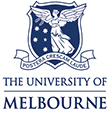Prediction of KIR3DL1 and human leukocyte antigen binding
Authors:
- Maiers, Martin
- Louzoun, Yoram
- Pymm, Philip
- Vivian, Julian P.
- Rossjohn, Jamie
- Brooks, Andrew G.
- Saunders, Philippa M.
Details:
Journal of Biological Chemistry, Volume 301, Issue 8, 2025-08-31
Article Link: Click here
KIR3DL1 is a polymorphic inhibitory receptor on natural killer (NK) cells that recognizes HLA class I allotypes. While the Bw4 motif spanning residues 77 to 83 is central to this interaction, structural studies have shown that polymorphisms elsewhere in the HLA molecule also influence binding. To address the challenge of predicting interactions across the extensive diversity of both KIR3DL1 and HLA, we developed a machine learning model trained on binding data from nine KIR3DL1 tetramers tested against a panel of HLA class I allotypes. Multiple models were evaluated using different subsets of HLA sequence features, including the full α1/α2 domains, the Bw4 motif, and α-helical residues excluding loop regions. The best-performing model, using Multi Label Vector Optimization (MLVO) and trained on α-helix positions, achieved AUC scores ranging from 0.74 to 0.974 across all KIR3DL1 allotypes. The model effectively distinguished high and low binders, revealing that residues beyond the Bw4 motif contribute to binding strength in a nonadditive manner. These findings demonstrate that binding affinity cannot be accurately captured by binary classifiers or single-motif rules. Our approach offers a more nuanced framework for modeling KIR3DL1-HLA interactions, with broad applicability to immunogenetic research and clinical decision-making.


